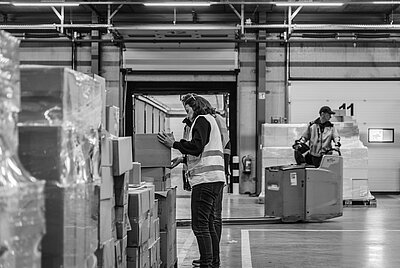Trade agreements and tariffs
The US is the EU’s largest trading partner with more than €1 trillion a year generated by this trade. Trump has indicated that he would look to impose 10-20% cross-border tariffs which makes this trade increasingly expensive.
As retailers, there are potentially tough decisions to be made. Lower prices to encourage US companies to continue to trade with you, impacting your margins, or maintain them and potentially see sales slow down.
A rise in tariffs will increase the cost of European goods in the US market, as they are paid by the importing company, making it more difficult for European retailers to compete with American brands on price. This could be incredibly challenging for industries like luxury fashion, where European brands traditionally enjoy strong demand from American consumers. Higher tariffs might compel brands like Chanel, Gucci, and Louis Vuitton to raise prices, potentially reducing sales volumes and profit margins in the US market. At worst, it could see some brands disappear from the US market completely.
The renegotiation of existing trade agreements is likely. Trump has been vocal about revising deals he perceives as unfair to the US, particularly agreements like NAFTA and the Transatlantic Trade and Investment Partnership (TTIP).
Raw materials and the supply chain
If the US imposes new trade barriers on the EU, it could force European retailers to reconsider their supply chains. Trump has long championed incentives to encourage American manufacturing and reduce dependency on foreign suppliers.
In his Agenda 47, he has outlined a tit-for-tat tariff plan that essentially prevents other countries from setting their own tariffs on US-made goods and raw materials. If a country charges more than the US charges on theirs, they will be issued with a reciprocal tariff.
This would mean significant restrictions or costs associated with importing American-made raw materials, components, or goods for your company, which could disrupt established European supply chains. Fashion retailers that rely on American cotton, for example, might see their costs spike, potentially forcing them to seek alternative suppliers, which could impact quality and brand perception.
Home goods retailers that rely on US-produced wood or chemicals used in furniture or household products could face rising expenses. Adapting might look like finding new suppliers in European or Asian markets or potentially passing on those costs to consumers.
Electronics retailers in Europe also often source components from the US – it’s the fifth most popular US import into the EU, with a value of almost $20 billion. But the electronics industry is very sensitive to cost changes, with small profit margins and plenty of competition. If tariffs are imposed on these materials, it could leave little room for cost increases and brands may have to choose between absorbing these costs or passing them onto consumers, which could reduce demand.
Consumer Spending
Trump’s policies could lead to shifts in US consumer spending that indirectly affect European retailers. If he follows through on his proposed corporate tax cuts, American consumers might see increased disposable income, leaving them free to spend more on European brands – effectively helping to off-set tariff increases.
But, if his policies lead to a recession, US consumers might cut back even further on spending, impacting European retailers.
Another variable for consumer spending is the potential fluctuation of the Euro-US dollar exchange rate, which could be influenced by Trump’s policies. A strong dollar against a weaker Euro could benefit European retailers selling in the US, as goods would be more affordable for American consumers. But this also has a downside. A weak Euro would also mean higher costs for European retailers importing from the US, affecting overall profitability.
For electronics and luxury fashion retailers, exchange rate volatility poses a substantial risk. Competition is rife within the American market and even back in 2020, a report by the Reshoring Institute showed that almost 70% of Americans preferred US-made products.
Any turbulence in these already fragile industries could have far-reaching consequences.
Adapt to thrive
Potential changes under the Trump administration can be prepared for and mitigated with careful planning and consumer research.
During the pandemic, European retailers were no strangers to diversifying their supply chains and reducing reliance on long-distance suppliers. As climate change becomes more and more into focus, that too has encouraged retailers to reduce the distance between them and their suppliers.
It’s time to look again at how you could make changes to your supply chain to protect it from potential impact. Consider more local suppliers and manufacturers who you might have originally discounted due to cost – they may now be more favourable than the impact potential tariffs could have on your products or goods.
Conducting consumer research is also essential if you are to maintain a position in the American market. Find out what consumers like about your product and what influences their loyalty towards you. This could trigger rebranding opportunities or adaptions to your marketing that can help maintain your influence and sales potential, despite potentially higher prices.
Finally, reconsider the role of your physical stores in the US. Do you need a bricks and mortar presence, or can you adapt your e-commerce strategy to provide American consumers with a great brand experience without the need for a physical store? Moving to wholly e-commerce could help mitigate tariff increases by reducing your overheads.
With potential shifts in tariffs, trade agreements, exchange rates, and raw material costs, you need to stay agile. By exploring new markets, refining your supply chain, and adapting your retail strategy, you can remain resilient and vigilant, ready to pivot at a moment’s notice.
If you’re looking for a European partner that will help you build a resilient supply chain, speak to our team on +31 (0) 88 494 20 80 or email us at online@worldpack.eu.


